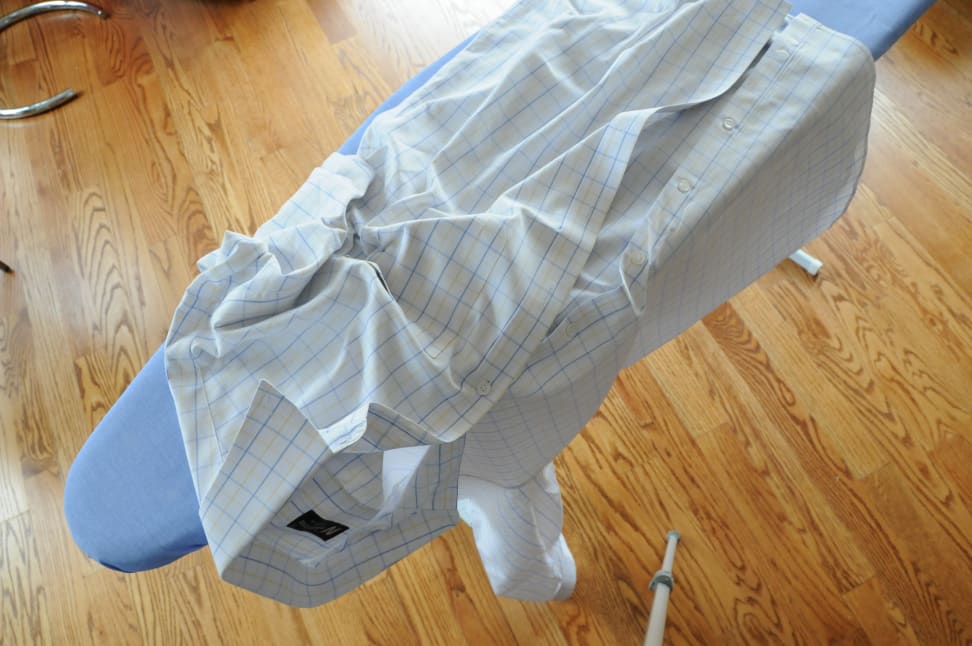The Ugly Truth About Wrinkle-Free Shirts
Your non-iron dress shirts have more in common with cadavers than they ought to.
 Credit:
Flickr user "peapodlabs"
Credit:
Flickr user "peapodlabs"
Recommendations are independently chosen by Reviewed's editors. Purchases made through the links below may earn us and our publishing partners a commission.
Is there any greater convenience for the business-casual crowd than the wrinkle-free dress shirt? Okay, perhaps K-cups could give them a run for their money, but magical shirts that you can wear straight out of the dryer are certainly near the top of the list. Some have called them "shirts from hell," but their stratospheric popularity speaks for itself.
But you might have wondered: What’s the secret behind non-iron dress shirts? How do they get away with things normal shirts couldn't dream of? After all, many of them are 100% cotton, and most even advocate regular machine washing.
Get ready to be grossed out: The secret ingredient in your wrinkle-free shirts is embalming fluid, also known as formaldehyde.
Why formaldehyde?
In order to create fabric that is wrinkle-resistant, shirts are given a bath in certain textile resins that—while not formaldehyde themselves—release tiny amounts of the chemical. This process makes the fabric stronger, and thus better able to resist the dreaded wrinkle.
What’s so bad about formaldehyde?
The dead like formaldehyde just fine, but that's because they're past caring about things like cancer. Formaldehyde, as it turns out, is a known human carcinogen—or at least it's classified that way by the National Cancer Institute.
On the one hand, there aren't any findings linking formaldehyde-emitting fabrics with cancer. The biggest risks related to the chemical have to do with inhalation, not skin contact. However, it can still have some icky side effects. Most notably, there have been reported instances of shirt-related dermatitis—a condition that occurs when skin comes in contact with certain chemicals. You know... like formaldehyde.
If these shirts are your go-to fashion choice, listen up. The New York Times reported some eyebrow-raising findings in 2010: Of 180 fabric-related products tested for noticeable formaldehyde levels, 5.5% exceeded the recommended limit of 75 parts per million. Though the vast majority of the tested items—including sheets, towels, and hats—passed with flying colors, non-iron shirts were among the 5.5% that had potentially dangerous formaldehyde levels. The chemical has also recently been found in higher-than-recommended levels in some baby clothing.
Unlike some other countries, the U.S. doesn’t regulate the use of formaldehyde in clothes, whether they're domestic or imported. It is regulated, however, in other industrial contexts—most commonly as a resin for bonding particle board.
Should I stop wearing my non-iron shirts?
Don’t strip naked just yet: If you can’t give up the convenience these shirts offer, do yourself a favor and wash them before you wear them.
This should be standard practice for all clothing-related purchases—after all, you have no idea who tried on what at the store—but it's especially important for clothes treated with chemicals. Washing might not completely eradicate formaldehyde, but it should drastically reduce its presence in your clothes.
For those with sensitive skin, though, it may be worth skipping the non-iron options entirely and taking 10 minutes every night to press your regular old dress shirts. Or if you're too lazy for that, invest in a steamer.
And it probably goes without saying, but if you notice a rash after wearing a new shirt, contact a dermatologist immediately.
[Hero image: Flickr user "Robert Sheie"]

